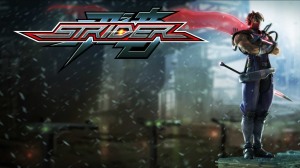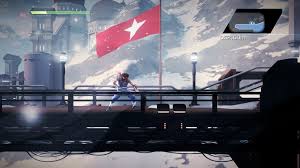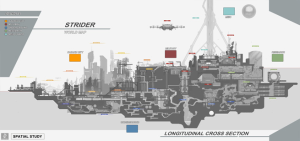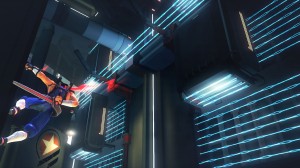Hey guys! After playing video games all of my life, I thought it would be neat to try my hand at reviewing them. As this is my initial jump in to the review process, the structure of the reviews are subject to change. One thing that won’t though is my approach to review scores. I find that whether or not a person should buy a game can rely on more complex factors than an aggregated numerical score, so I’ve decided to structure my reviews as an overall impressions piece on the game with no numerical score.
Last week’s release of Strider heralded the eponymous Strider Hiryu’s return to the current generation of consoles in a form inspired by all of his previous forms while still maintaining a feel of its own. Strider 2014 is a very fluid 2.5D action platformer taking the speed and climbing of the arcade original and combining it with a Metroid-style non-linear map similar to the NES version. It puts the player in the Strider’s shoes and tasks them with infiltrating Kazakh City to assassinate the despotic world leader Grandmaster Meio (pronounced May-oh) and eliminating all threats in their way.
Gameplay wise, I had an excellent time with Strider. It’s a blast to tear through enemies with Strider’s signature blade the Cypher, and his movement and climbing abilities from the arcade is back and improved upon, making this the most agile Strider to date. It’s fun to simply run around Kazakh city, especially when you find all of the movement upgrades. The Metroid style world design only bolsters that feeling, as the numerous secrets and upgrades for health and ability power hidden throughout the map have many ties to the more complex and technical navigation options Hiryu has at his disposal that the main path doesn’t require, making acquiring them even more rewarding.
The game’s presentation is very well done, with the art design paying homage to the old designs while updating them and making them their own, which can be seen best in the design of Strider himself. The environments and their background show great attention to detail and look great on the PS4 I played it on. The particle effects as well, when Strider’s cypher slashes through enemies or on a wall, look particularly nice. Technically the game runs well with not many dips in framerate, although I did encounter one strange instance of prolonged slowdown. The game also had a couple of instances of glitches in geometry where the attacks and movement of Hiryu would accidentally land me inside the wall of floor geometry and force me to quit the game and restart. These glitches happened extremely rarely however, occurring maybe three times across my playthrough, which was by no means short. I finished the game at nearly 11 hours at 100% completion, and I’d say that it is still a 4-5 hour game if you go straight through, and less if you died less then I did, which was semi-frequent. The difficulty of the game I would say is onthe easier side on its default normal setting, however. If you are adept at action platformers or are familiar with classic Strider, I would suggest the hard difficulty setting. If you are like me, however, who enjoys these types of games but isn’t particularly great at them, normal does a great job of allowing you to enjoy yourself and still feel skilled at the game, outside of a couple boss fights or enemy encounters.
Overall, I really enjoyed my time with Strider, and would recommend anyone who likes Metroid or Castelvania: SotN -style games to pick this up, as well as fans of classic Strider. The folks at Double Helix did a service to the franchise with this game, and it’s good to see Strider back.



